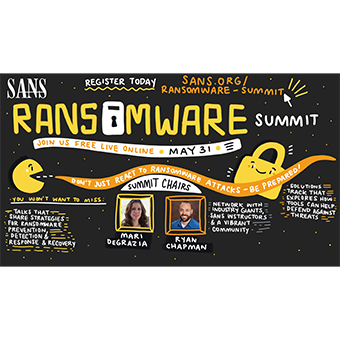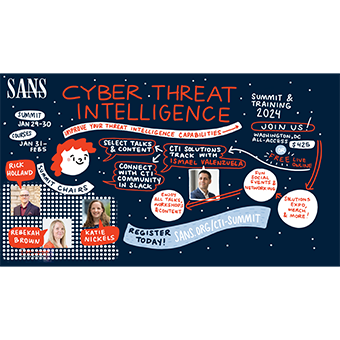Cyber threat intelligence (CTI) is essential for modern cybersecurity, offering crucial insights to anticipate, identify, and mitigate advanced threats. The recent cyber-attacks on French diplomatic entities by Nobelium, a notorious Russian cyber-espionage group, underscore the importance of robust CTI. According to the French cybersecurity agency ANSSI, these attacks demonstrate how sophisticated adversaries continuously evolve their tactics, techniques, and procedures (TTPs) to breach secure environments.
ANSSI reports that the Nobelium intrusion set, also known as Midnight Blizzard, has been active since at least October 2020 and is primarily used against high-value targets for espionage purposes. Nobelium's phishing campaigns have targeted countries across Europe, Africa, North America, and Asia. The group, linked to the Russian foreign intelligence service SVR, employs compromised legitimate email accounts of diplomatic staff to conduct phishing campaigns against diplomatic institutions, embassies, and consulates. These activities are part of a campaign referred to as “Diplomatic Orbiter,” where forged documents used as lures are used to deliver private loaders, executing public tools like Cobalt Strike or Brute Ratel C4 to access victim networks, ensure persistence, and exfiltrate valuable intelligence.
Nobelium's relentless efforts to infiltrate high-value targets like diplomatic entities highlight the necessity of CTI in understanding and countering such threats. By leveraging CTI, organizations can gain comprehensive insights into the threat landscape, enabling them to anticipate potential attacks and develop effective defense strategies. The ability to identify early indicators of compromise (IOCs) and unusual behavior patterns through CTI allows for prompt and precise detection, significantly reducing the window of opportunity for adversaries to cause harm.
Moreover, the targeted nature of Nobelium's phishing campaigns and advanced malware underscores the importance of continuous monitoring and proactive threat hunting. CTI provides the intelligence needed to stay ahead of these threats, ensuring that security measures are continually updated to address new vulnerabilities and attack vectors.
Nobelium's Evolving Tactics
Nobelium, responsible for the infamous SolarWinds attack, has continued to evolve its TTPs, posing significant threats to global cybersecurity. Nobelium's recent operations targeted French diplomatic entities, showcasing their ability to adapt and refine their methods to infiltrate highly secure environments. This evolution emphasizes the need for robust CTI programs to stay ahead of such sophisticated adversaries.
Key Tactics Used
Spear Phishing Campaigns: Nobelium has employed highly targeted spear phishing campaigns, sending emails with malicious links or attachments designed to compromise credentials. These emails are often crafted to appear legitimate, increasing the likelihood of successful attacks.
Advanced Malware: The group has developed custom malware variants capable of bypassing traditional security defenses. This malware is designed to remain undetected while collecting sensitive information.
Data Exfiltration: Nobelium has perfected covert data exfiltration techniques, allowing them to extract sensitive data from infected systems without raising immediate suspicion. This includes using encrypted channels to transmit data back to their server.
The Role of CTI in Prevention
Prevention is another key aspect of CTI. It involves understanding the threat landscape to anticipate and thwart potential attacks. CTI aids in:
Threat Landscape Understanding: Provides a comprehensive understanding of emerging threats and trends, allowing organizations to strengthen defenses accordingly.
Vulnerability Management: Helps identify and address weaknesses before they can be exploited, prioritizing updates and patches.
Security Awareness Training: Informs targeted training programs for employees, teaching them to recognize and respond to phishing and social engineering attacks.
Policy and Procedure Development: Enables the development of robust security policies and procedures tailored to specific threats, guiding the implementation of preventive measures.
Threat Hunting: Proactively searches for signs of malicious activity within the network, detecting and neutralizing threats before they cause harm.
The Role of CTI in Detection
Detection is a crucial component of CTI. It involves continuously monitoring networks for IOCs and unusual behavior patterns. CTI aids in:
Early Threat Identification: Continuous monitoring for IOCs and abnormal behavior helps identify potential threats early, allowing for swift response and risk mitigation.
Proactive Defense Strategies: Insights into TTPs allow organizations to develop proactive defense mechanisms, such as updating security protocols, deploying advanced detection tools, and training staff to recognize phishing attempts and malware.
Enhanced Incident Response: CTI provides critical information for incident response teams to understand the scope and nature of threats, facilitating quick containment and eradication.
Continuous Improvement: CTI programs contribute to ongoing improvement by learning from previous incidents and adapting to new threats, ensuring security measures remain effective.
The Role of CTI in Mitigation
Mitigation focuses on reducing the impact of cyber threats. CTI aids in:
Incident Management: Provides detailed intelligence on the nature and scope of an attack, enabling effective incident management and response.
Damage Control: By understanding the adversary’s tactics, CTI helps implement measures to control and minimize the damage caused by cyber-attacks.
Recovery Planning: Informs recovery plans by identifying compromised assets and helping organizations restore normal operations swiftly.
Risk Assessment: Continuously evaluates threats and vulnerabilities, helping organizations adjust their security measures and risk management strategies accordingly.
Building a Strong CTI Program
To harness the full potential of CTI, organizations should:
Invest in Technology and Tools: Utilize advanced threat intelligence platforms that offer real-time data and analysis capabilities. These tools enable continuous monitoring and analysis of threats, providing actionable insights for timely response.
Collaborate and Share Information: Engage in information-sharing communities to stay updated on emerging threats and share intelligence with peers. Collaboration enhances the collective understanding of the threat landscape and strengthens defenses across organizations.
Continuous Training in CTI: Implement ongoing training programs to ensure all team members are proficient in the latest CTI methodologies and tools. Courses like SANS FOR578: Cyber Threat Intelligence are instrumental in equipping your team with the skills needed to understand and combat sophisticated threats. Continuous education ensures that staff remain knowledgeable about the latest threats and best practices for prevention, detection, and mitigation.
The persistent and sophisticated attacks by Nobelium highlight the critical role of cyber threat intelligence. By investing in CTI, organizations can enhance their ability to detect, respond to, and mitigate advanced cyber threats, thereby safeguarding their critical assets and maintaining operational resilience.


.png)
